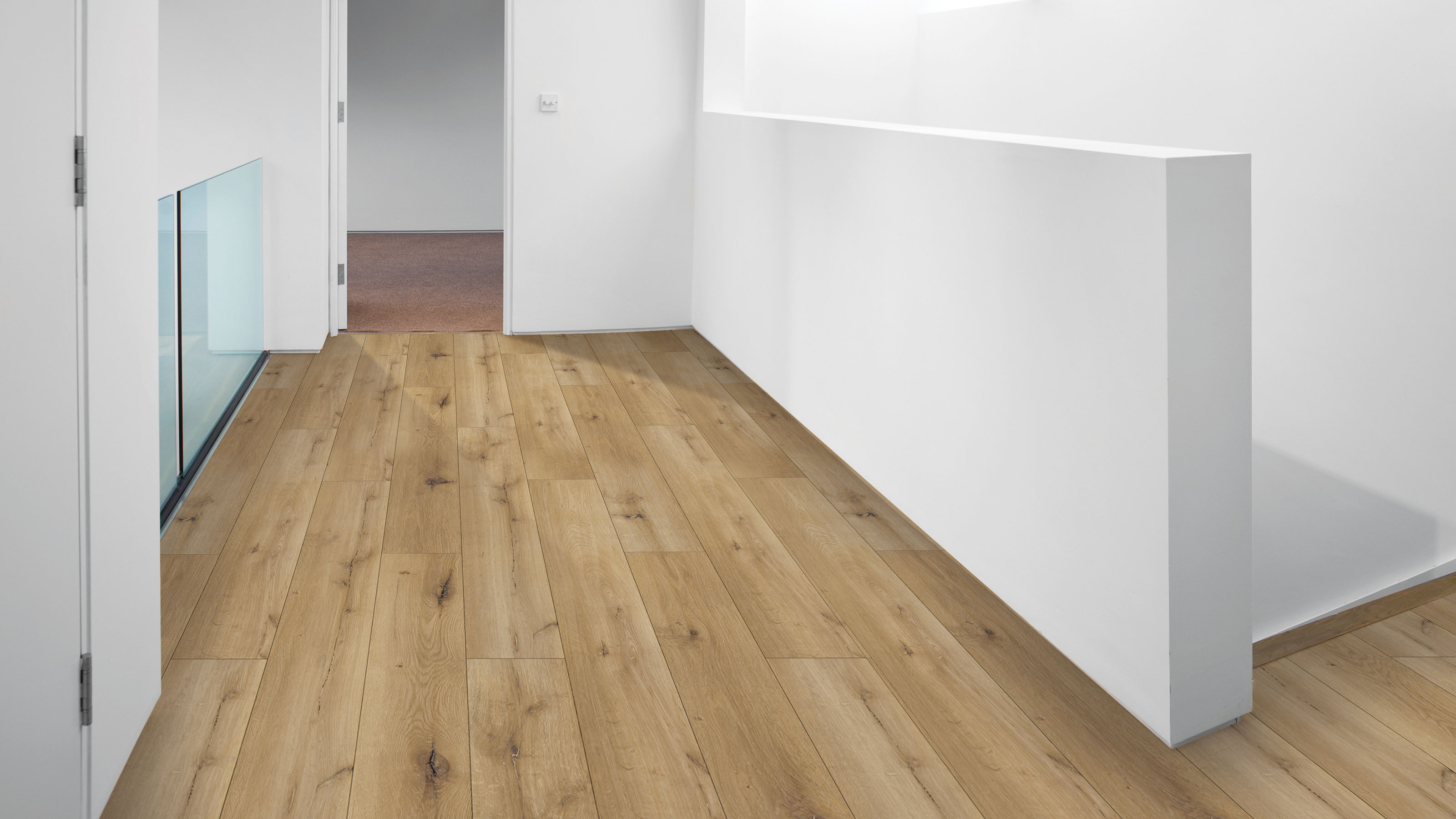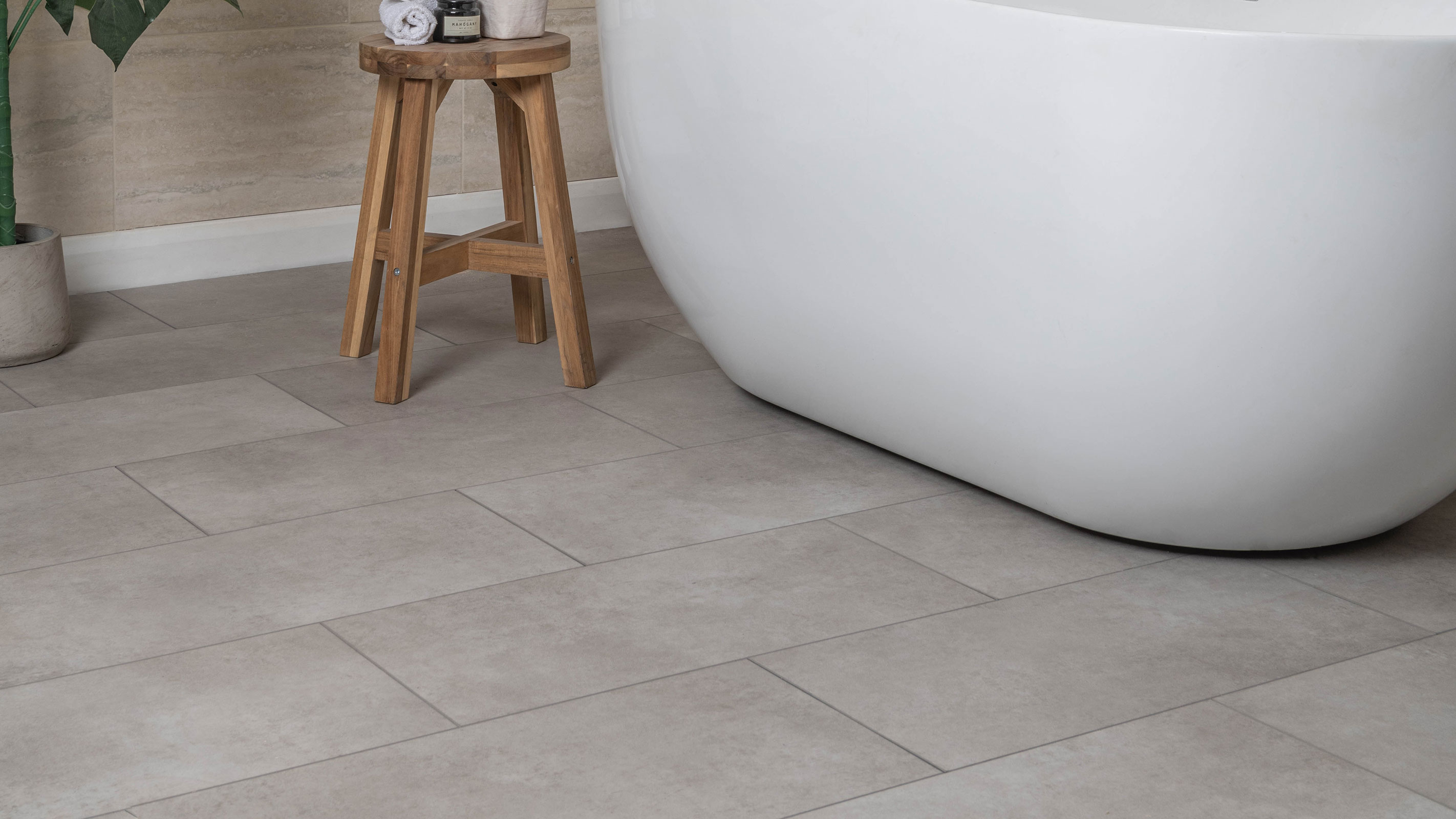What is SPC flooring and is it a better option than LVT?
Exactly what is SPC flooring? We take a look at the pros and cons of this flooring type, as well as exploring costs and how it compares to luxury vinyl tile

Just what is SPC flooring? While you might have heard of this when researching types of flooring for your home, do you know what it is made of, its pros and cons and how much it is likely to set you back?
Stone Plastic Composite (SPC) flooring is a relative newcomer to the world of residential flooring, yet it has an awful lot going for it, meaning you can expect it to grow in popularity in the coming years.
In this article, we take a look not only at what SPC flooring is made of, but also at how it compares to other, similar, flooring types, both in how it performs and the kind of maintenance required for its upkeep, but also when it comes to installing it. We'll also give you a guide to what it is likely to cost.
What is SPC flooring?
SPC flooring is a type of vinyl flooring, also known as 'rigid flooring'. But what is it made of exactly?
"SPC flooring is made from a core of stone plastic composite, normally limestone and plasticisers," explains Paul Hambidge, managing director at Factory Direct Flooring. "Like other types of flooring, such as LVT, the outer layers are made up of a real wood or laminate effect layer for a ‘real feel’, plus underlay for cushioning underfoot. It also features a coating to make it 100% waterproof, extremely heat resistant and to prevent bleaching in bright areas."

Is SPC flooring better than LVT?
While SPC and LVT flooring are very similar – both are types of vinyl flooring – there are some key differences that it is wise to familiarise yourself with.
Luxury vinyl tile (LVT) flooring also comes in plank form (LVP). It is made up several layers – usually four – and tiles are generally around 4mm to 6.5mm in thickness. The top layer consists of aluminum oxide that prevents light scratching and shoe scuffs. A clear film layer that protects the flooring against rips and tears comes next, followed by the design layer which is typically a photo-realistic print of stone or wood. The final layer is the backing which provides the solid structure and makes up 90% of the vinyl’s thickness. That said, some manufacturers are now offering a 12-layer system.
"Luxury vinyl tiles are more widely known by property owners due to their longevity in the market," says Paul Hambidge. "Although there have been huge advancements in the quality, feel and styles of LVT, the emergence of SPC could see these taking a back step."
The main differences between the two are:
- Strength: The density of SPC boards is superior to LVT, making it a stronger product. "SPC’s core is far more compact and sturdier due to the core being made from a stone and plastic composite," explains Paul. "This small change makes a great difference in the impact resistance, as well as reducing expansion and contraction in changing weather conditions."
- Durability: SPC tends to be thicker and stronger than most LVT meaning it can withstand damage and dents better. "Although both LVT and SPC are waterproof, SPC offers 100% protection against water damage so can be a popular choice in wet rooms, bathrooms and kitchens," points out Paul.
- Appearance: Actually both LVT and SPC come in a huge range of colours, patterns and effects. However, where SPC pips LVT to the post is that it can be used pretty much anywhere in the home without any worry about damage.
- Resilience: SPC is known within the industry for its ability to withstand extremes in temperature. "SPC outshines LVT flooring in terms of its ability to withstand extreme temperatures, making it the perfect option for kitchens and spas, but also if air con units are needed to be on full time to regulate hotter temperatures," says Paul.
How much does SPC flooring cost?
One of the main concerns of anyone choosing a new floor tends to be cost — so how does SPC fare?
Thankfully, SPC flooring is not a hugely expensive option. It costs between around £18/m2 up to approx. £30/m2, making it similar to LVT flooring costs, although these can come in at much higher depending on the specifications of the product.
Are there different types of SPC flooring?
There is not just one type of SPC flooring. While it most commonly tends to be sold in plank form, mimicking the appearance of wooden flooring, it also comes in tiles that are designed to click together and these are a great option for DIYers.
There are also a wide range of patterns and textures offered.
"'Embossed-in-Register' is the process for creating an authentic looking wood grain effect with realistic colour and texture," explains Paul. "It is often used in other types of flooring such as laminate — but with the added features that SPC offers, it’s another huge advantage."

Paul has 32 years of flooring industry knowledge and experience from both an installation and manufacturing perspective. He started out as installer of very large commercial flooring projects for multiple retailers. As director of Factory Direct Flooring, he has been involved in all aspects of flooring and has worked with some of the largest producers of wood flooring, vinyl flooring and laminate floors.
Get the Homebuilding & Renovating Newsletter
Bring your dream home to life with expert advice, how to guides and design inspiration. Sign up for our newsletter and get two free tickets to a Homebuilding & Renovating Show near you.
Natasha was Homebuilding & Renovating’s Associate Content Editor and was a member of the Homebuilding team for over two decades. In her role on Homebuilding & Renovating she imparted her knowledge on a wide range of renovation topics, from window condensation to renovating bathrooms, to removing walls and adding an extension. She continues to write for Homebuilding on these topics, and more. An experienced journalist and renovation expert, she also writes for a number of other homes titles, including Homes & Gardens and Ideal Homes. Over the years Natasha has renovated and carried out a side extension to a Victorian terrace. She is currently living in the rural Edwardian cottage she renovated and extended on a largely DIY basis, living on site for the duration of the project.

